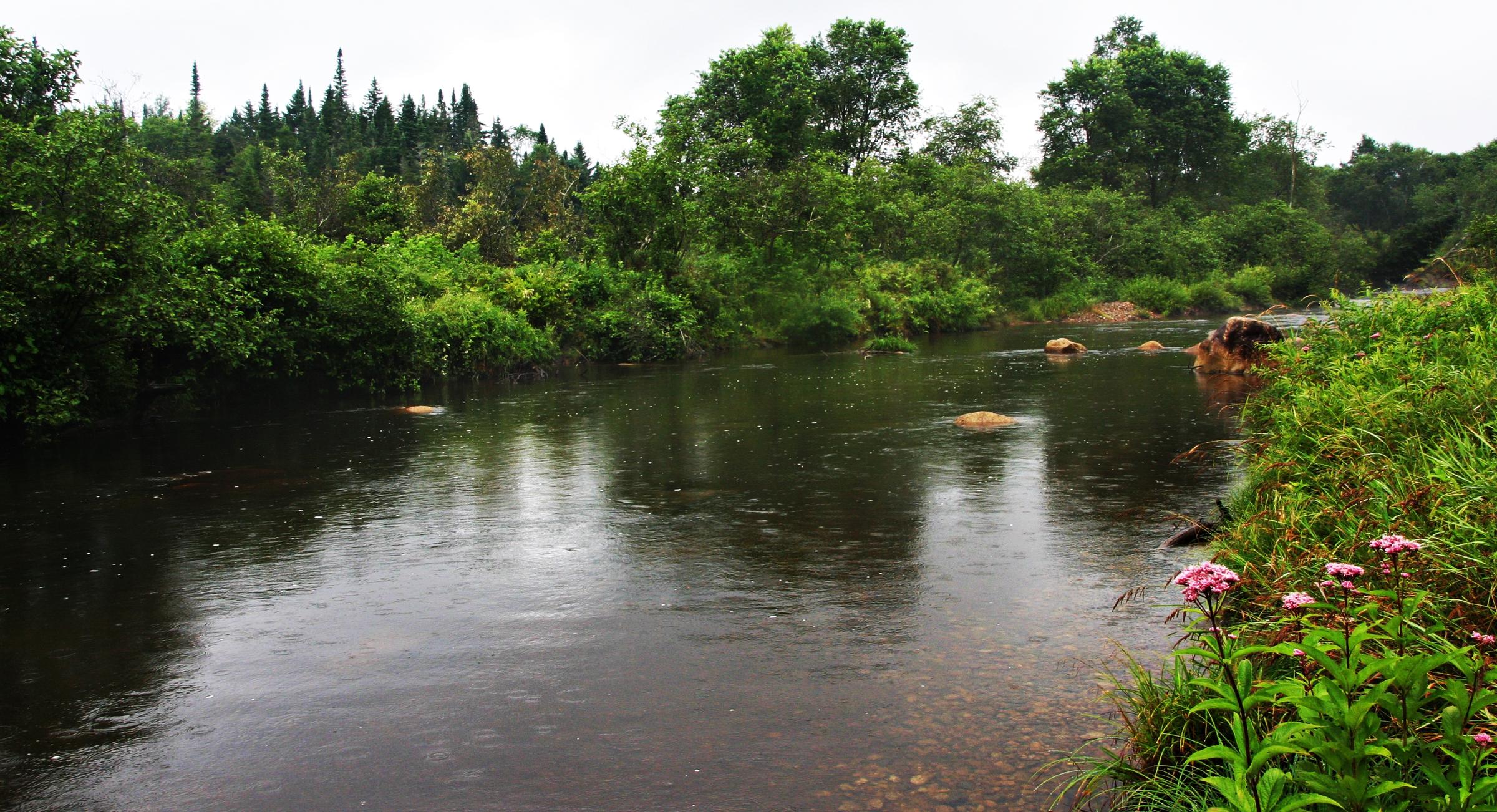
Historically, Nash Stream (NH) was known as a high quality wild Brook Trout stream that provided exceptional angling opportunities. Unfortunately, in 1969, the dam used to release water from Nash Bog Pond for log drives failed, sending a torrent of water akin to the 500-year flood event down Nash Stream. Immediately thereafter and in response to the dam failure, stretches of Nash Stream were straightened and its banks made higher by bulldozers. Consequently, much of the instream and riparian habitat was altered to the detriment of wild Brook Trout and other fish species. Additionally, many essential Brook Trout spawning tributaries were culverted with undersized pipes that impeded fish passage and/or have led to geomorphic instability.
Purpose of the project:
Historically, Nash Stream (NH) was known as a high quality wild Brook Trout stream that provided exceptional angling opportunities. Unfortunately, in 1969, the dam used to release water from Nash Bog Pond for log drives failed, sending a torrent of water akin to the 500-year flood event down Nash Stream. Immediately thereafter and in response to the dam failure, stretches of Nash Stream were straightened and its banks made higher by bulldozers. Consequently, much of the instream and riparian habitat was altered to the detriment of wild Brook Trout and other fish species. Additionally, many essential Brook Trout spawning tributaries were culverted with undersized pipes that impeded fish passage and/or have led to geomorphic instability.
Restoration of Nash Stream began in 2005 as a joint effort of the New Hampshire Fish and Game Department (NHFGD), New Hampshire Division of Forest and Lands (NHDFL), and Trout Unlimited (TU). The objective of this conservation effort is to restore habitat for native fish species in the watershed using well-established geomorphic restoration principles. More than 90% of the watershed is owned by the NHDFL and much of Nash Stream is easily accessible to the public. All of the work conducted to date and planned for the future directly implements one or more of the Eastern Brook Trout Joint Venture (EBTJV) habitat objectives. The work also helps to implement the New Hampshire Wildlife Action Plan, NHFGD Inland Fisheries Operational Plans, and TU’s Strategic Plan. Ongoing research at Nash Stream, funded by the U.S. Fish and Wild Service (USFWS) Science Excellence Initiative Program and Management Assistance Grant, is providing valuable data to inform the overall restoration project and similar work elsewhere.
Currently, efforts are underway to restore approximately 5.5 miles of instream habitat on the mainstem of Nash Stream between its confluence with Emerson and
Long Mountain Brooks. The restoration activities include boulder placements, pool construction, large wood additions, floodplain reconnection, and riparian revegetation. All work is being conducted using proven restoration techniques that simulate natural stream morphology and processes. Ultimately, the Nash Stream Restoration Project will restore over nine miles of mainstem habitat and access to more than six miles of tributary habitat for wild Brook Trout. The resulting socioeconomic benefit resulting from these conservation outcomes is estimated to be $8.2 million.
Link to full project description - http://bit.ly/1e47yXn
Link to Nash Stream article published in Northern Woodlands - http://bit.ly/1opTRvR
Link to State Letter of Support - http://bit.ly/1s7tdXW
Project Timeline:
2011: Restoration activities initiated.
2012: Restoration activities completed.
2013: Post-project monitoring, including fish, habitat and geomorphic surveys, to evaluate the results of the various project elements.
Sponsoring Organization:
Trout Unlimited
New Hampshire Fish and Game Department
Project Funding:
FWS-NFHP Funding: $ 71,429
Partner Match: $336,280
Total: $407,709
Project Partners:
New Hampshire Fish and Game Department, New Hampshire Division of Forests and Lands, New Hampshire Department of Environmental Services, Trout Unlimited, US Fish and Wildlife Service.
